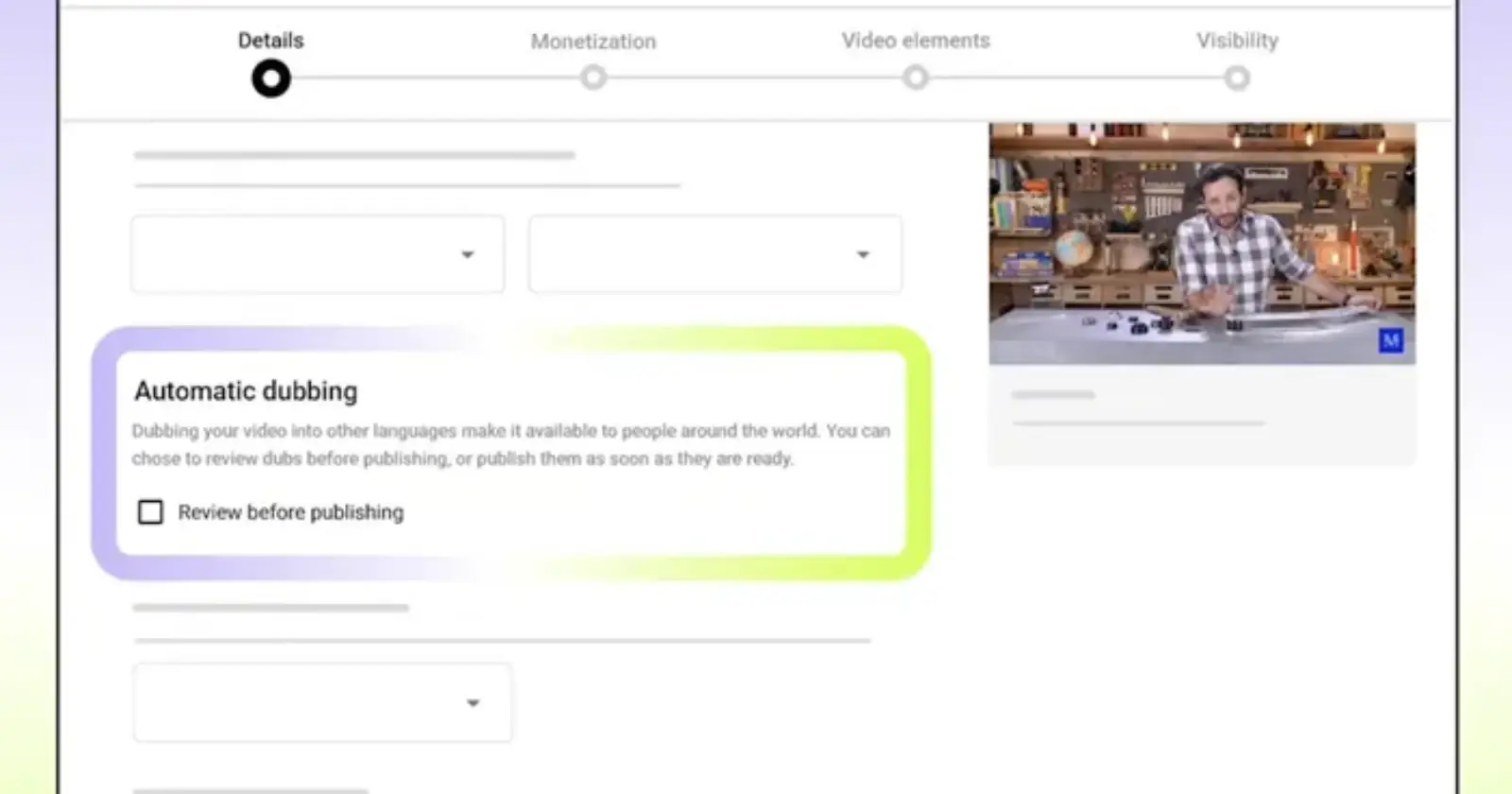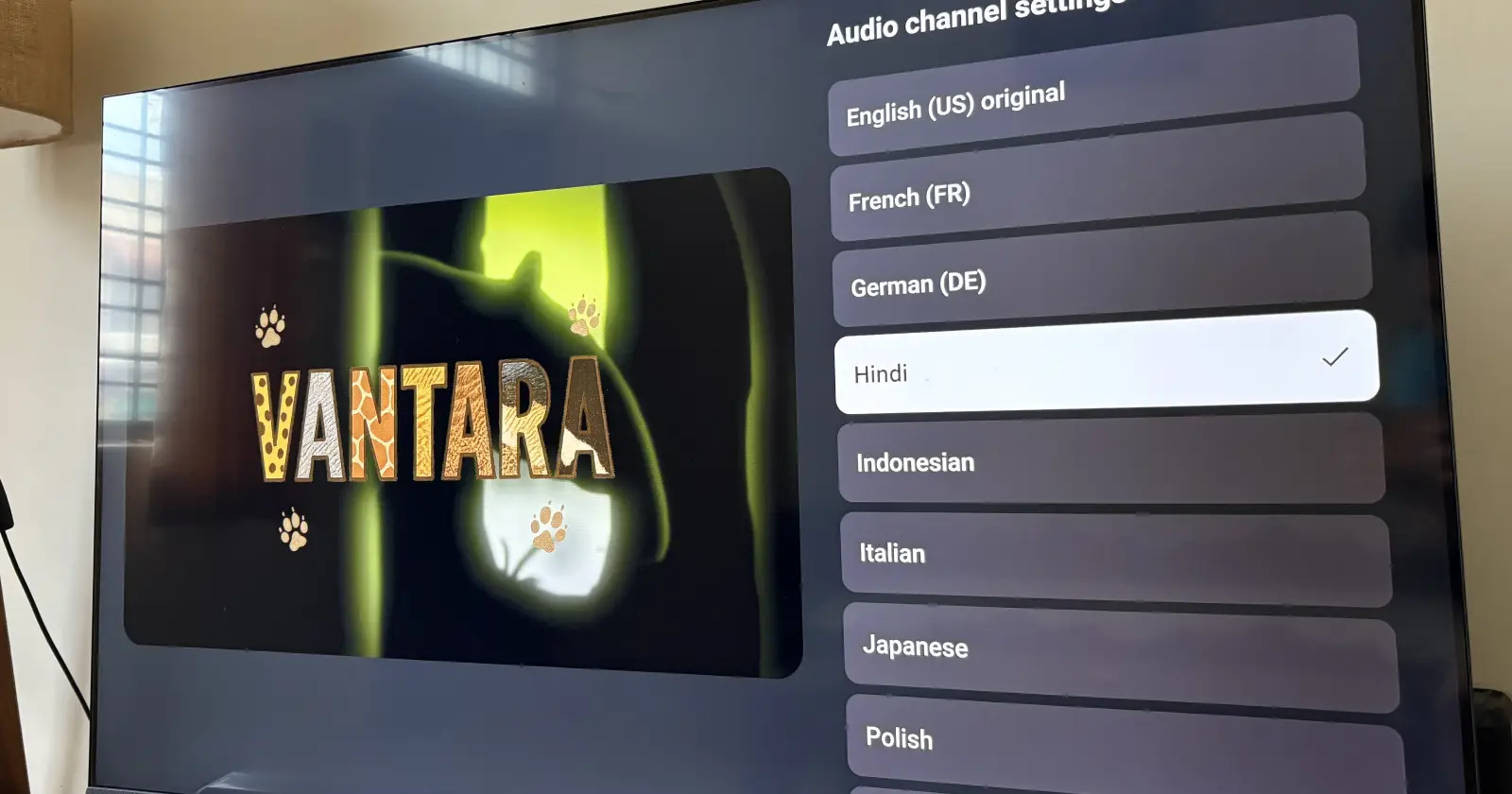So picture this: I’m settling in for a relaxing evening of YouTube on my TV, ready to watch my favorite tech reviewer break down the latest smartphone. The video starts, and suddenly I hear Hindi audio instead of English. I grab the remote, navigate through menus, switch the language back, rewind to catch what I missed, and by the time I’m sorted out, my mood is completely shot.
This has become my routine reality with YouTube’s auto dubbing feature, and frankly, I’m tired of it.
YouTube’s AI-powered auto dubbing seemed like a brilliant idea on paper. Take popular videos, generate dubbed versions in multiple languages, and boom — global accessibility solved. But in practice, it’s become a source of constant frustration for millions of users worldwide. Despite watching exclusively English content for years, YouTube’s algorithm somehow decides I’d prefer Hindi dubbing because I’m located in India. It’s baffling how a platform that knows I clicked “English” every single time still can’t figure out my language preference.
The problem gets worse when you’re watching on TV. Unlike desktop or mobile, where switching languages is relatively quick, TV interfaces are clunky. You need to pause, click buttons multiple times to find the audio track option, select English, confirm your choice, and then rewind because you missed crucial content. What should be a seamless viewing experience turns into a technical support session.
But I’m not alone in this struggle. Head over to YouTube’s subreddit and you’ll find complaints about auto dubbing nearly every day. Users from different countries report similar issues where the feature activates when it shouldn’t, poor dubbing quality that makes content unwatchable, and the persistent inability of YouTube’s systems to remember user preferences.
The irony is that YouTube continues expanding this feature despite widespread user backlash. Earlier this year, we highlighted user frustration when auto dubbing first rolled out more broadly. Instead of addressing these concerns, YouTube doubled down and expanded the feature to more creators and regions.
What makes this particularly aggravating is that YouTube has all the data it needs to get this right. The platform tracks every click, every preference selection, every moment I choose English over Hindi. Yet somehow, its recommendation algorithm can suggest videos I might enjoy with scary accuracy, but its language detection system can’t remember I prefer English content.
For creators, this feature presents another headache. Many have reported that auto dubbing creates inconsistent experiences for their audiences. Technical content, in particular, suffers because AI dubbing can’t properly handle specialized terminology or context-dependent explanations. Some forward-thinking creators have started creating tutorials on how to disable the feature from their end, recognizing that it’s hurting their viewer experience.
The solution shouldn’t fall on creators’ shoulders, though. YouTube needs to fix its preference system. If I’ve manually selected English 50 times in a row, maybe — just maybe — that’s my preferred language. Revolutionary concept, I know.
While YouTube continues to ignore user feedback about this feature, users have found workarounds. Some disable auto-play entirely, others use browser extensions to manage language preferences, and many have simply started avoiding content from creators who haven’t disabled auto dubbing. This isn’t just bad for viewers; it’s potentially damaging to creators who lose engagement through no fault of their own.
Until YouTube fixes its preference detection system, I’ll keep recommending that creators disable auto dubbing in their channel settings. Your viewers will thank you for it, and you’ll avoid becoming part of the problem that’s making YouTube increasingly frustrating to use. Because at the end of the day, shouldn’t watching videos be enjoyable rather than a constant battle with AI-generated audio tracks?
That said, while auto-dubbing is annoying, YouTube’s new age estimation tech that’s rolling out in the US is also becoming another source of frustration for users. You can read all about that here. So let’s just hope our favorite services don’t become a nightmare for us to use because of forced features and laws.
TechIssuesToday primarily focuses on publishing 'breaking' or 'exclusive' tech news. This means, we are usually the first news website on the whole Internet to highlight the topics we cover daily. So far, our stories have been picked up by many mainstream technology publications like The Verge, Macrumors, Forbes, etc. To know more, head here.



